Pressure to perform is something that pro-swimmer Louise Hansson has always battled. Though she felt and understood her coach’s performance expectations, far greater was the impact of the pressure that she put on herself- a sentiment that many great athletes share.
“There’s obviously a lot of pressure that you go through as a professional and collegiate athlete, and everyone’s expecting it to be easy. There have been several times it’s just been too much pressure with school and swimming and everything and you just can’t handle it. And that’s just something that’s going to happen,” she said.
As with any sport, the road to the top would not be an easy one. Hansson entered the World Championships in May of 2021 with major expectations for her performance, feeling solid in her preparation; Hansson was ready to win gold.
After the semi-finals she had a second and a half lead on the competition going into the A-final, and was a clear favorite to win her best event, the 100-meter butterfly.
“I just choked under the pressure and I had never felt so bad about myself. I ended up third overall, which was my first individual senior medal, and I could barely stop crying in time for the victory ceremony, I was so disappointed in myself,” she recalled.
In that one race, her confidence was destroyed and she had to begin a slow and painful journey to find herself again in time for the Olympics later that year.
“I had no confidence leaving that meet, and it took me a solid four months to get it back to try to perform well at the Olympics.”
Coming back from this huge disappointment is just one of the trials that she has faced over the course of her career.
Louise Hansson grew up in the pool. Her father was a swimmer as well as a coach, and she spent time near the water from a very young age, beginning baby swim lessons before the age of one.
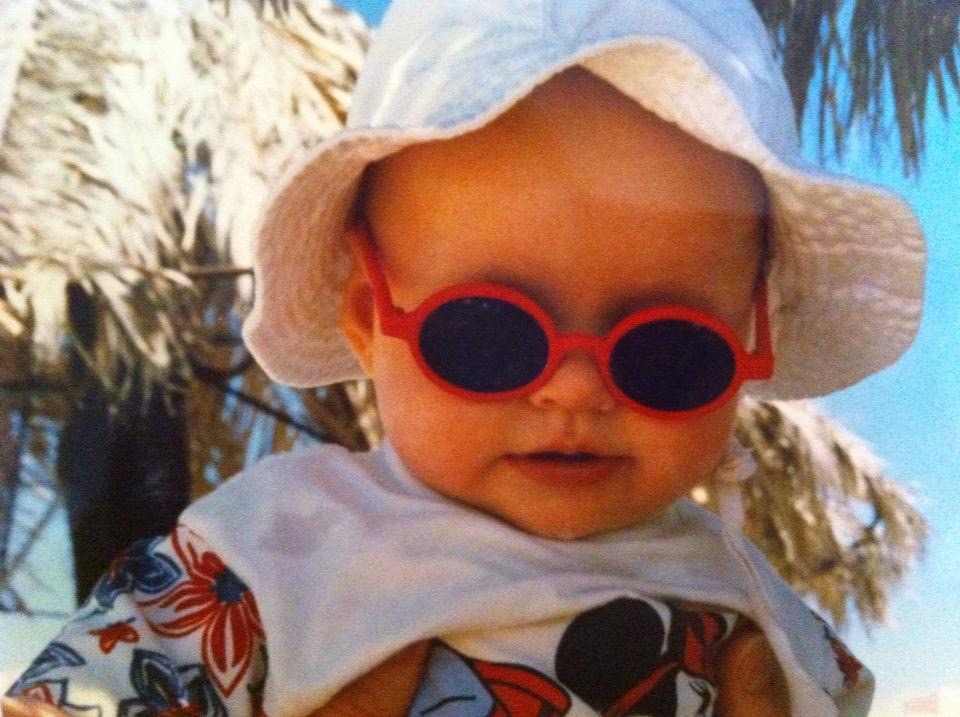
She had a natural feel for the water and swam her first competition at the age of nine, going on to make the Swedish National Team a few short years later. Though she competed in many sports, like gymnastics and track, swimming would be the sport that captured her heart.
Hansson swam with her age group program in Sweden until she was 14, but excelled quickly through the ranks and graduated to an older group of elite athletes, all five to six years older in age. She quickly grew close with them, and they in turn slowly started leaving to attend college in the United States. This prospect was initially terrifying to a young Hansson.
“English was my worst subject in school, I absolutely hated speaking it! The thought of moving to the US, in the beginning, was terrifying. But then the older kids all came back in the summers, and were so happy, they said it was a great experience,” Hansson recalled.
Her eyes were opened to the opportunity, the appeal of going to university in a unique location, with the ability to train outdoors an added bonus.
When Hansson’s father swam, he had a similar chance to move to the US and swim collegiately. Though he didn’t accept the opportunity at the time, it was a decision he would later regret and became a factor in her decision to pursue the opportunity for herself.
International meets served as an opportunity for USC coaches Dave Salo and Chase Bloch to speak with Louise and present the idea of a collegiate career at USC, which she ultimately accepted.
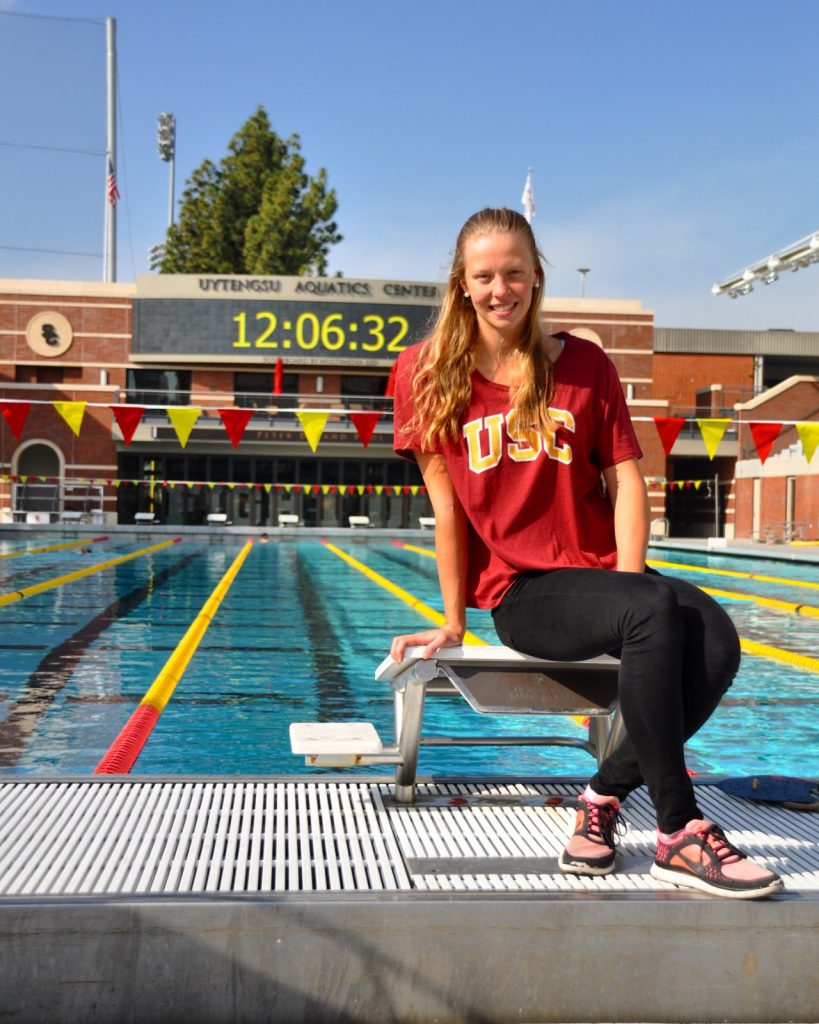
“Louise was shy at first but very intentional with her preparation and her demeanor. We had planned Skype sessions with coaches Dave, Catherine, and me for about a year and a half before she committed to USC,” said USC coach Chase Bloch.
The training at USC and the United States, in general, offered a new challenge for Hansson, as she had never swum short course yards before. She recalls swimming for head coach Dave Salo fondly, as he always pushed her to be her best self in and out of the pool.
“I was holding several 200s in a practice just over my best time from a push. I don’t know how I did it. Dave definitely got me into a fresh mindset of training hard and pushing the limit.”
Hansson adjusted quickly to the short course yards training, learning to find new strengths.
“Louise liked doing aerobic practices, so it was a transition to get her into more power. She was diligent about stretching before and recovering after so this helped with flexibility, and allowed for the ability to increase power in the weight room which transferred over to the pool,” Bloch shared.
Pushing limits and breaking barriers was something Hansson would do often over the course of her collegiate career. After finishing third in the 100-yard fly at NCAAs her freshman year, Hansson entered her sophomore year determined to be a National Champion. At Pac-12s that year, Hansson swam the fastest 100-yard butterfly ever recorded by a woman on American soil.
Though the 100-yard butterfly was a definite strength for Hansson, the 200-yard butterfly was a mental hurdle throughout her career. The taxing butterfly event often serves as the nemesis to many swimmers.
Though not traditionally a part of Hansson’s championship meet schedule, it was a race in which coach Salo believed she could be strong.
“It was definitely a race that was terrifying and made me doubt myself a lot. But every time I swam it, I gained some confidence, and I learned how to kind of handle it a bit better,” Hansson said.
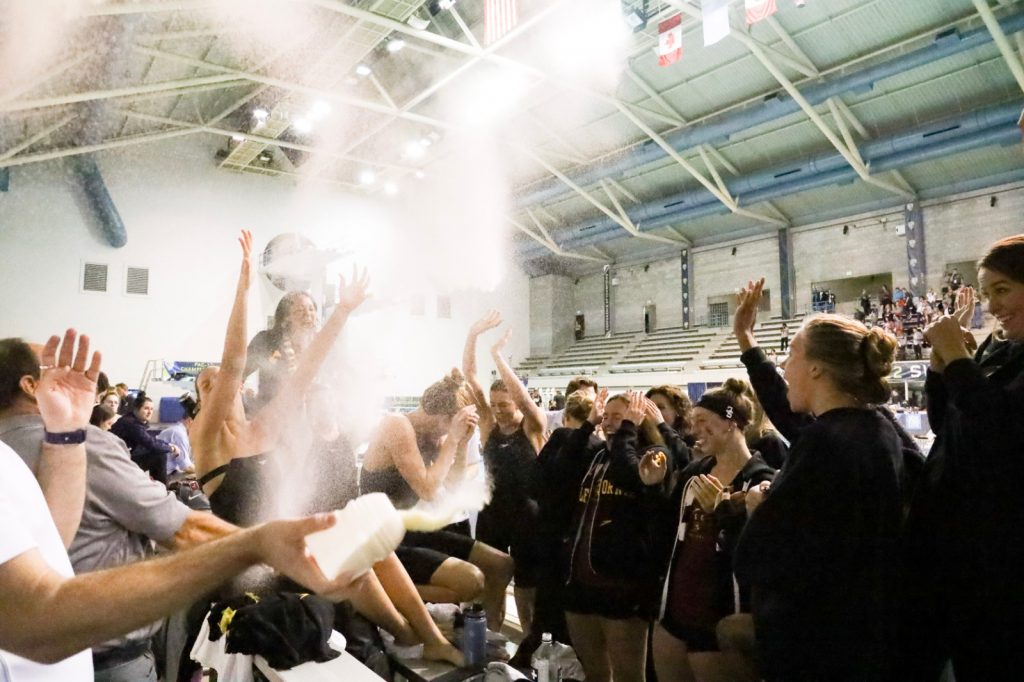
Learning to handle the pre-race anxiety, especially the kind that came with this particular event was a huge area of growth throughout her career.
“I went into almost every 200-yard butterfly throwing up before my race the first year and a half. It was just always a fight to get over all the nerves and it came to the point where I couldn’t handle the nerves. I had to push it even further to break out crying just to get it out,” she said.
The pre-race anxiety was taxing mentally and physically, with minimal recovery time from these anxiety episodes before it was time to perform.
The turning point in her struggle with the 200 butterfly came at NCAAs during her junior year. She had just emerged victorious with a record-setting performance in the 100 butterfly, which gave her confidence in her ability to succeed in the 200.
“I remember going up to [my friend] Catherine and being like, ‘I got this tomorrow. I know how to swim this race to be able to be successful.’ And I definitely was super nervous going into it, but nervous in a sense where I was still relaxed,”.
It was a different mindset for Hansson, going in with the mentality that she wasn’t just going to survive it, as she had with 200 butterflies of the past; this time she went in with a champion’s mentality that she was going to win, which she did in grand fashion.
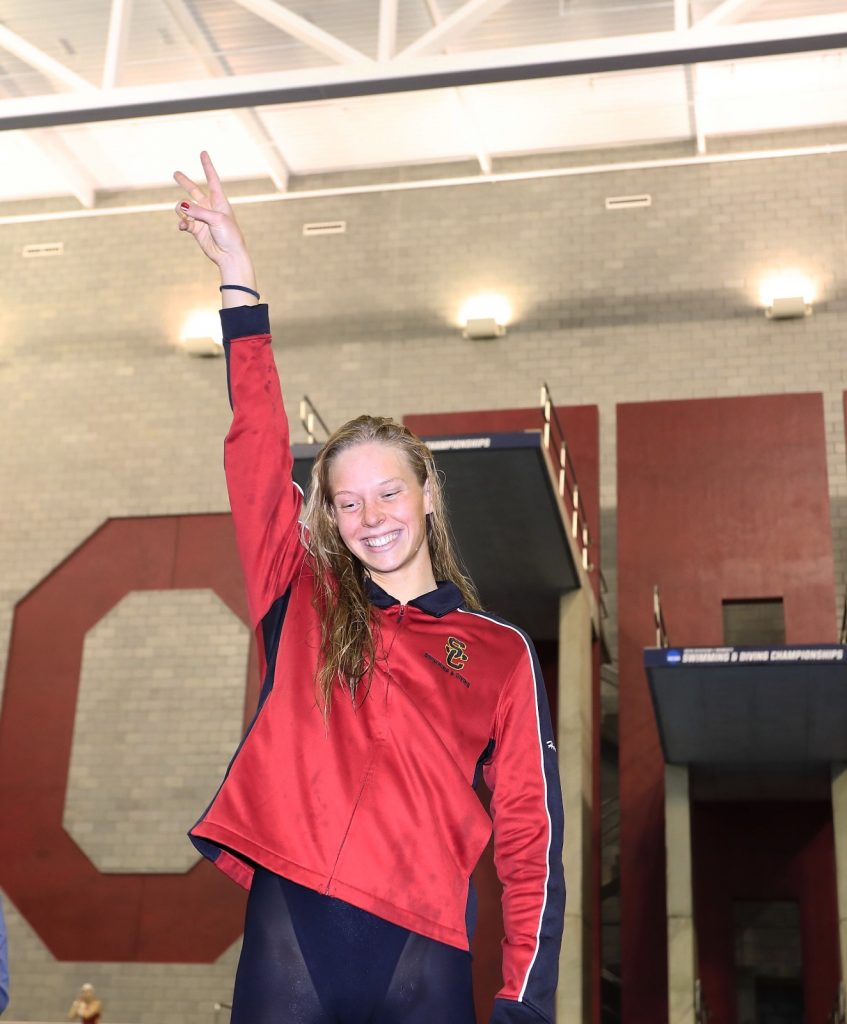
Though Hansson overcame her struggles with the 200 butterfly, this was just one obstacle she would face over the course of her career. Hansson struggled not to define herself by her performances, however, this was made far more difficult under the pressure of Olympic glory.
Performance-induced anxiety and mental health is a sad reality in many athletes’ lives, that has gained much attention in the public sphere, especially during the course of the Olympic games in Tokyo this past summer.
“I don’t think I honestly understood the seriousness of mental health in athletes up until the past year or two. Especially at this past Olympics, with so many people speaking up about it, and I can definitely resonate with some feelings that other athletes are sharing
,” Hansson said.
Leaving the Tokyo Olympics in 2021, she developed a new understanding of the trials and tribulations of Olympic competition, in a different manner than she had experienced at the 2016 Rio Olympics.
Entering Rio, she was at the lowest point of her career, after overtraining had left her with a badly injured shoulder. Feeling frustrated that she was fighting against her body to perform, pressure from the media would only compound her stress heading into the Olympics.
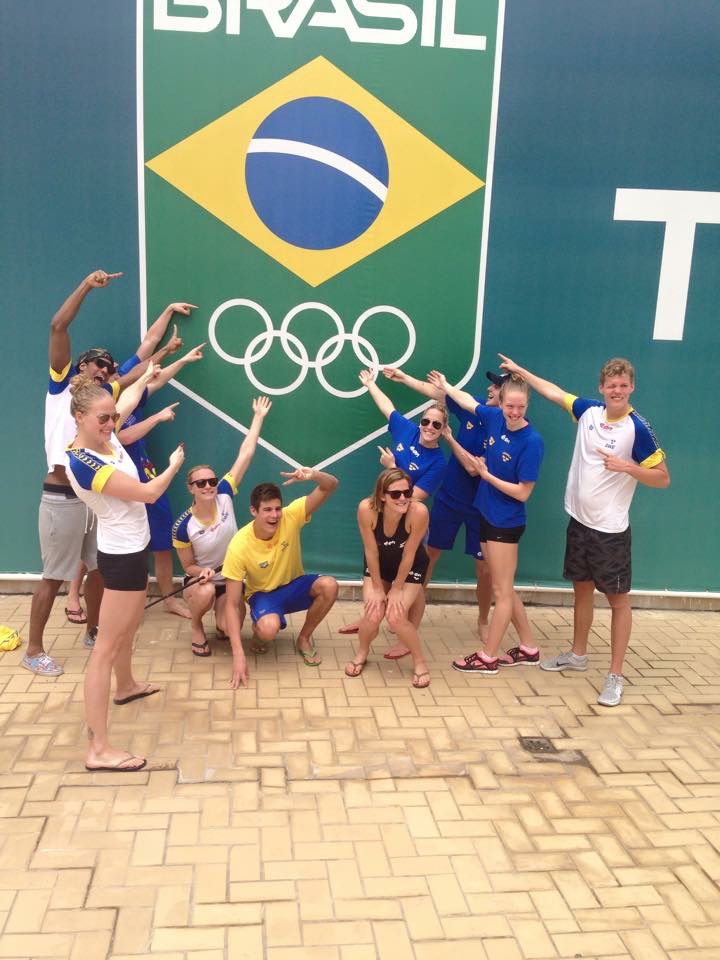
“I got absolutely destroyed by the media and there were some really nasty articles. I ended up not even going through interviews because it was mentally so bad for me to talk to them. They made me feel so bad about myself, and it was a long process to get out of this.”
The 2016 Olympics came and went, and Hansson worked to try and handle the pressure and expectations placed on her by herself and others, by finding things outside of the pool that brought her joy.
When the 2021 Olympics came, there were heightened expectations for Hansson’s performance with podium potential in several races. The games fell short of her hopes, as she finished fifth in three races, missing out on an Olympic medal. Though she had performed well with best times in all of her events and raced in one of the fastest Olympic finals in history, she still fell just shy of a coveted Olympic medal, which left her feeling strangely empty.
“It was really hard leaving that meet and not achieving the medal. You just feel a bit lost because you have dedicated four years of your life to this moment, and then in a couple of minutes, that’s just over. And it’s not like I was done swimming, or my career was over. But it was such a strange feeling.”
Finding people in her life who could remind her of things greater than swimming became pivotal in bouncing back from the lows.
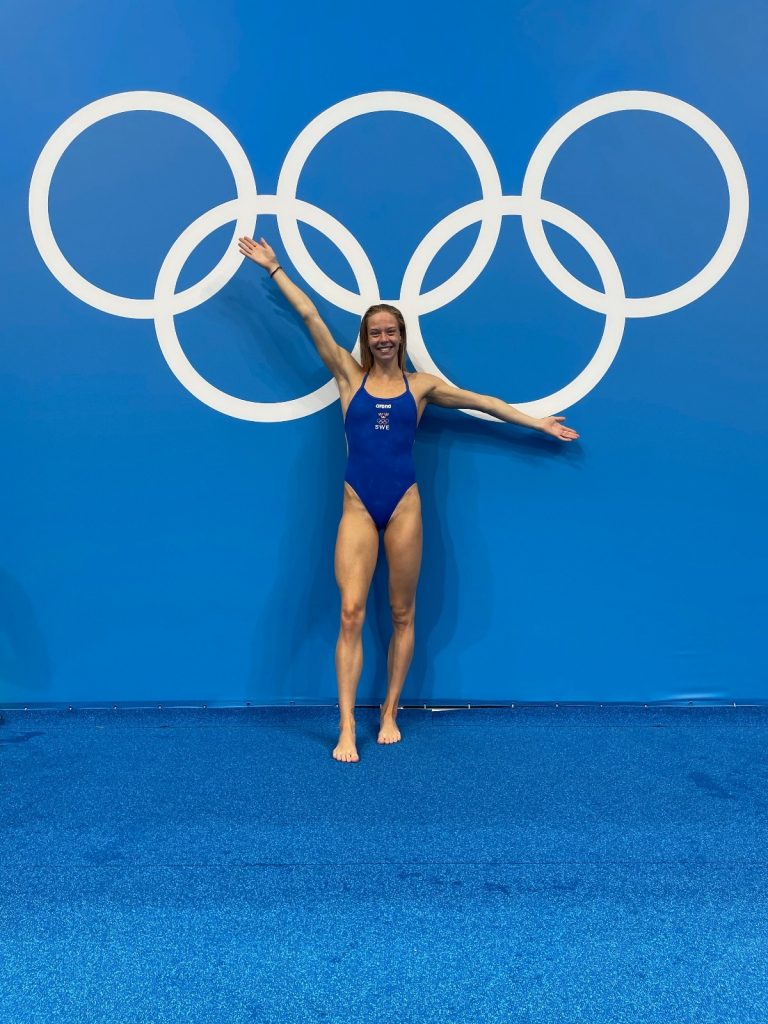
“A bad race is not you. It’s not defining who you are. It’s just sport, and it’s really important to keep in mind. Finding things that bring you joy and breaking up a habit and pattern were good in those situations for me.”
Hansson wasn’t a stranger to heartbreak in her career, especially after her senior season at USC was cut short as a result of the beginning of the COVID-19 pandemic. With head coach Dave Salo set to wrap up his last season, there was a heightened desire to perform well at the NCAA championships. The team was in the best shape Hansson had seen it in years, with potential for multiple national champions to be crowned at the meet, when, days before the team was set to leave, it was abruptly canceled as the pandemic quickly spiraled.
Hansson was left especially devastated, as this meant she would lose the culmination of her career in the United States, as well as the chance to achieve her goal for that season: being the first woman ever to break the :49-second barrier in the 100-yard butterfly.
It was her last chance at this goal, as her short course yards career would end when she returned home to Sweden, a bitter pill to swallow. Not achieving a goal is one thing, but not having the opportunity to try for the goal was something far more difficult for Hansson to process.
“It’s not every day you have the opportunity to be the first in history to do something. It was such a special goal I had set up for myself, which was really hard, and that was the end of my collegiate career, and difficult to have that ending to the best four years of my life,”.
Though this ending was painful, Hansson was able to move forward in pursuit of the goals and dreams she had had since her childhood, success on the world stage in international competition.
ISL, a league for competition amongst pro swimmers, would prove to be instrumental in building Hansson’s confidence in her racing abilities. She was able to practice performing in high-pressure situations and train her mental preparation for these circumstances.
“I absolutely love ISL, I think it is a great opportunity to bring back the college aspects of dual meets. There is a very high competitiveness- you’re going up against the best in the world.”
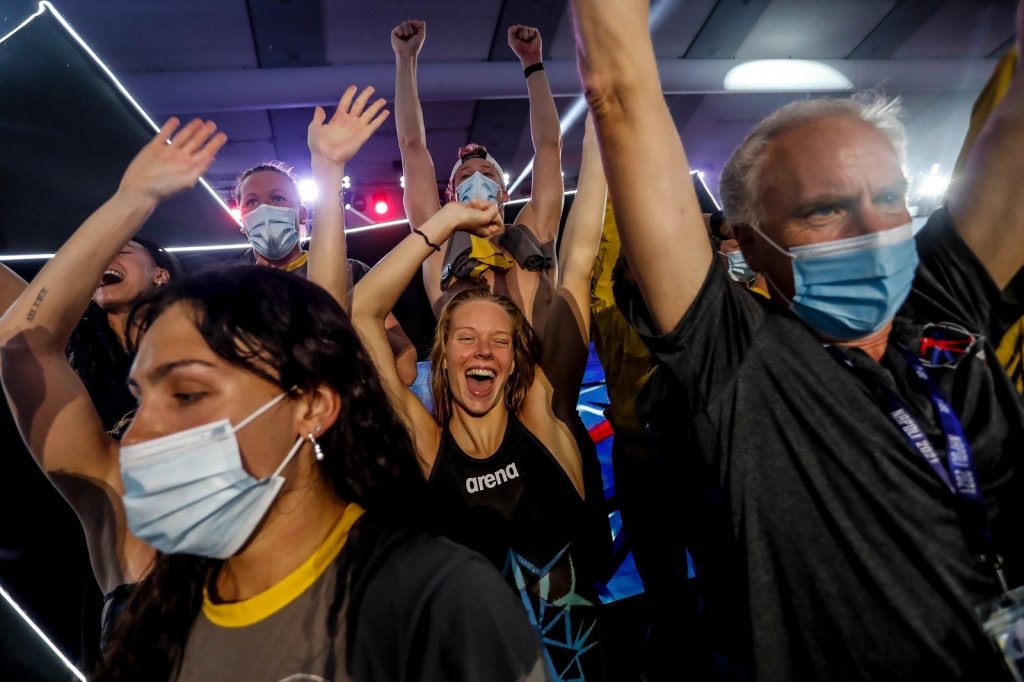
With a quick turnaround between races, Hansson was able to build mental toughness, and learn how to bounce back from bad swims, preparation becoming key to her success.
“When you become a professional swimmer, everything becomes about individual performance and you put a lot of pressure on yourself. But ISL adds that playfulness with the sport, that you can have a bad race and move on to cheer for your teammates,”.
This was a highlight of Hansson’s collegiate experience as well, finding happiness in the team that allowed her to overcome the low moments.
“You can have bad races. But sometimes you swim for something bigger than yourself. That’s a really nice aspect to have when we are an individual sport, to find that sense of cohesiveness,”.
The ISL season ended around October of 2021, and Hansson left it with huge confidence for the upcoming short course world championships.
At World Championships, in the prelims of her first individual event, the 100-meter backstroke, her confidence grew, and Sweden’s medal-winning 4×100 freestyle relay that she anchored gave the team huge excitement for their chances in the medley relays that would come in the following days.
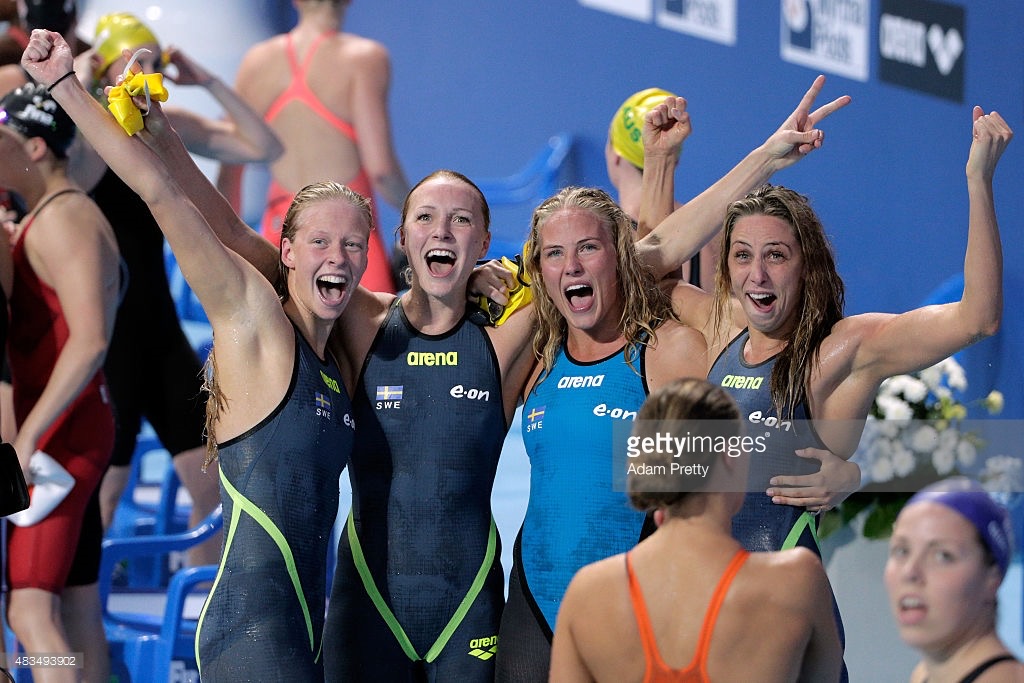
The next day came and with it, finals in the 100 backstroke. Hansson thought she had a chance at a bronze medal, typically not a backstroke specialist.
She swam the final, touched the wall, and saw a “1” by her name. She was overcome with joy, shock, and happiness all at the same time, now a World Champion.
As the meet progressed Hansson went on to have a defining experience, coming away with three medals on the final evening of competition, winning silver in the 4×50 freestyle relay, silver in the 100 butterfly, and gold in the 4×100 medley relay.
“I was just ecstatic. I would never have dreamt that I would leave that meet with seven medals.”
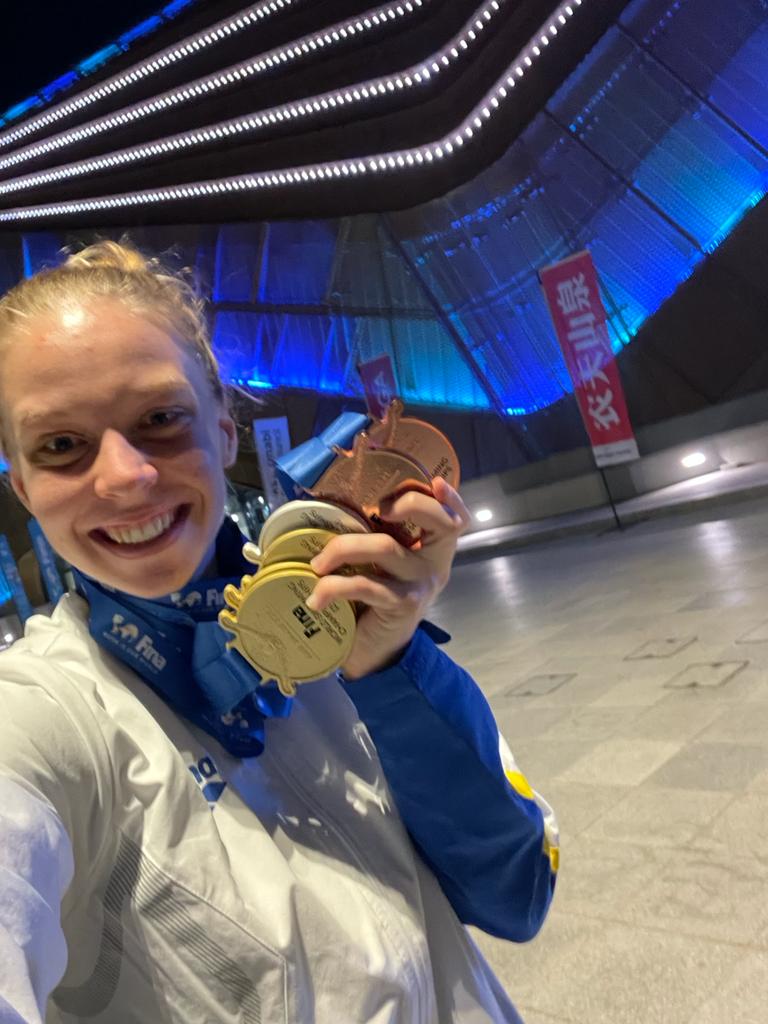
The 4×50 medley relay holds special value to Hansson as well, getting to share a team with her younger sister Sophie, not to mention the world record time the team would post on the relay.
Keeping things in perspective has been a huge part of Hansson’s successes throughout her career.
She faced difficulties, just like any other athlete, but firmly believes they were a necessary part of her recent successes.
“Even though it doesn’t look like a failure to people from the outside with me winning a bronze medal at Europeans, for me that felt like the worst-case scenario, I felt like the world was falling down. I couldn’t sleep for three nights and I defined myself by it. And I think the ups and downs are something that will always be there, but the ups and downs are what make you stronger,”.
In fact, Hansson firmly believes that if she had emerged victorious in that 100 butterfly at Europeans, she may not have achieved the successes she has since.
“Everyone is gonna have lows and highs. Take advantage of the lows and try to learn about yourself and definitely not define yourself by your results. You learn so much about yourself when you’re at your lowest, that will help you get to the highest again.”
Hansson has gained immense life-perspective throughout her swimming career.
“I’m not going to remember my three NCAA wins. That’s not what I’m going to leave USC with. It’s the memories, it’s the experience.”
To the young athletes- Hansson attributes a huge part of her success and her ability to bounce back from hard times by “knowing your why” and keeping in mind the internal drive that brings you back to the pool day in and day out.
“It has to come from within because if it’s just external factors and someone else putting the pressure on you it’s going to be hard to do it in the long run. Do it because you love doing it.”
Louise will continue to build new experiences. Now a World Champion and world record holder, she is proud of the career she has cultivated and the challenges she has overcome, all beginning with an immense love for the sport.
For more information on mental health in student-athletes visit https://thehiddenopponent.com/